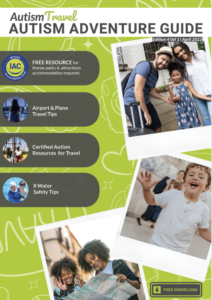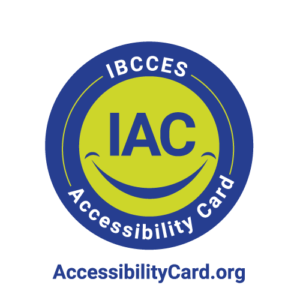by: Nicole Thibault, CATP – Magical Storybook Travels
 In 2017, the Family Travel Association (FTA) released a study called, “Learning More About Today’s Modern Traveling Family.” In this study, the Family Travel Association identified three kinds of family travelers: The Hassle-Free Traveler, the Intrepid Traveler, and the Cautious Traveler.
In 2017, the Family Travel Association (FTA) released a study called, “Learning More About Today’s Modern Traveling Family.” In this study, the Family Travel Association identified three kinds of family travelers: The Hassle-Free Traveler, the Intrepid Traveler, and the Cautious Traveler.
The FTA says that the “Cautious Travelers” have been identified as wanting to visit new places and like to travel to experience different cultures. But they do worry about safety, and since they find it hard to identify appropriate activities for their children, they are the most likely to visit theme parks. These parents feel that travel strengthens family bonds, but may be too nervous to leave their comfort zones.
Can you guess which travel group Autism Parents fall into? I’m betting that 99% of Autism Moms and Dads are Cautious Travelers!
As a mom of an amazing autistic son, I am a self-identified Cautious Traveler. Since my son was diagnosed at the age of two, I’ve had to be able to think at least seven steps ahead of my son when traveling. Will the destination have loud noises so that we need to bring our noise-cancelling headphones? Will the restaurants have one of the five foods that my son eats? Will there be long lines for attractions? Will the crowds be overwhelming? Will the planned vacation activities push my son so far beyond his comfort zone that he gets stressed and refuses to participate? How can I best prepare for stress, anxiety, or a dreaded public meltdown?
So how do Autism Parents overcome their Cautiousness? Here are a few tips for working up to traveling with your kids, with or without autism:
- Start small. First start with trips to the grocery store. Then day trips. An overnight to a local hotel. A two day road trip to somewhere close by. A three day stay at at a theme park. A week long trip that includes an airplane ride and new experiences.
- Do your research. If your child only eats five foods, be sure to check out the restaurant’s menus before you travel to make sure they serve one of the five foods your child will eat. Does the destination have activities or attractions that are of high interest to your child?
- Understand your child’s boundaries. Be realistic with your travel expectations. It’s probably not realistic to expect your child with Autism to go from 8 a.m. to 10 p.m. without a sensory break, so be sure to plan your day with several breaks for lunch and quiet time. If your child has an aversion to loud noises, perhaps skip the fireworks show at the end of the day.
- Always be willing to push your child slightly beyond their comfort zone. Temple Grandin calls this the “loving push.” When it comes to travel, sometimes you have no idea what your child will and will not like to do, so be open to trying new things. It may not work out and may fail miserably, and if it does, at least you had your child try something new and you now know you can cross that activity off the list.
- Have a back-up plan. When we do travel activities that my son may struggle with, we always have a back-up plan, in case he’s not willing to go beyond his comfort zone. For example, a few years ago, we planned an activity that had our family crossing a suspension bridge. I spoke with the Tour Guides ahead of time and explained that my son has Autism and anxiety. I wasn’t sure if, when the moment came, he would be able to cross that bridge. The Tour Guide and I came up with a back-up plan, that if he froze and couldn’t cross, there would be a golf cart waiting for him, ready to take him to the end point, and we could continue on from there. Ultimately, he surprised us all and crossed with no problem, but the back-up plan was in place, just in case.
- Use a Certified Autism Travel Professional. While you know your child best, research can be daunting! Why not use a Certified Autism Travel Professional to help you plan? They can recommend destinations and activities that will best suit your family and your child’s needs.



 IBCCES Accessibility Card Now Available as a Mobile App
IBCCES Accessibility Card Now Available as a Mobile App